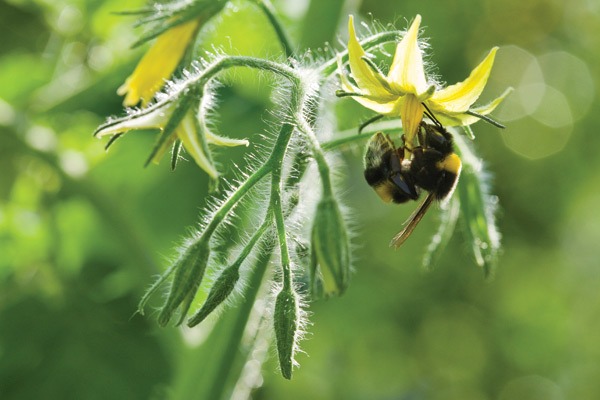Polynation
In the production of protected areas, a major problem, especially for tomatoes, is pollination and fertilization of flowers due to poor air circulation and reduced presence of insects in buildings, especially in the cooler part of the transition seasons.
There are various ways of pollinating crops: mechanical (vibrators, fans, pulsators, …), chemical (hormones) and biological (use of bumblebee). As the requirements for quality and health safety of fruits and vegetables are growing, the most acceptable way is the biological method, which is based on the use of bumblebee as pollinators. Benefits achieved by using bumblebee as a polynator are multiple: early mature, more intense color and greater uniformity of fruits, higher average weight and fruity strength, higher yield, better quality, or greater sugar content (briquettes).
The most frequently asked question is why is it a bumblebee, not a bee? Bumblebees have been found to be more productive and less vulnerable to temperature oscillations, low intensity of light, and therefore have a higher number of flowers visited. Today, bumblebees are used for pollinating plantations of various plant species, most often: tomatoes, peppers, zucchini, watermelons, strawberries, blueberries, blackberries, raspberries, apricots, cherries, cherries, pears, apples, etc., as well as seed crops of sunflower, alfalfa. In smaller objects of protected space, there is often a problem with the inefficiency of bumblebee work. The main reasons for this are:
– Use of certain chemical preparations, which are not allowed in the use of bumblebees;
– Poor quality and bitter taste of the pollen, which is caused by the large oscillations of temperature and humidity inside the objects;
– High temperatures and low humidity in low objects, because then the bumblebees stay within the hive to cool the larvae; The brown spots on the shaft are a sign that crankshafts with the oral apparatus disperse the sugar gland on the surface.
– The objects are without barriers on the front openings, and bumblebees go to the nearby pollen source (acacia, dead nettle, other meadow flowers).
Bumblebees are placed in the crop at the beginning of flowering of the first flower branch (in the case of tomatoes) and regularly supplemented with adequate number of hives, until the end of flowering of the last flower branch. In order to observe the hives in hot days, it is recommended to move the hives to a shady part of the building, or to set the shadows for shadows. The flowers that are fertilized by the bumblebees at the top of the stomach receive brown spots, so that the effectiveness of the bumblebee can be easily monitored.
Koppert produces different types of hoods called NATUPOL, with Bombus terrestris bumblebee companies. Depending on the purpose of Koppert, it produces the following types of NATUPOL hives:
– MINIPOL – vegetables of short vegetation in small objects of protected space. One hive covers up to 300 m2.
– NATUPOL XS – vegetation of short vegetation in a protected area. One hive covers up to 700 m2.
– NATUPOL S – vegetables of short vegetation in a protected area. One hive covers up to 1,000 m2.
– NATUPOL N – Poverty of short vegetation in the protected area. One hive covers up to 1,500 m2.
– NATUPOL E – vegetables, fruits, strawberries. One hive covers up to 2,000 m2.
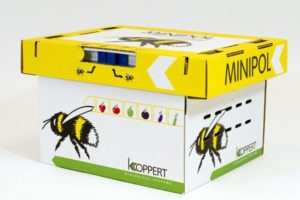
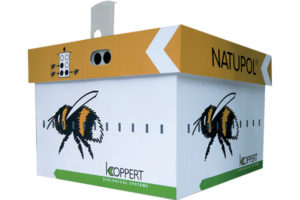
MINIPOL NATUPOL
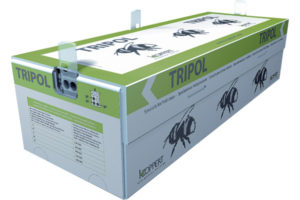
TRIPOL – Vegetable vegetables in open field, planting of fruits, strawberries, sunflower, alfalfa. One hive covers 5,000 to 10,000 m2. Extremely suitable for pollinating in orchards. The hive is made of waterproof plywood that protects the bumblebee company from rodents and other pests in field conditions, and it also has additional isolation that eliminates the impact of weather conditions on the swarm. At the initial stage of flowering, it is recommended to use two TRIPOL hives on an area of 10,000 m2, and when natural pollinators appear on the same surface, only one TRIPOL hive is used. For cherry and blueberries in intensive farms, up to 3 hives per hectare.
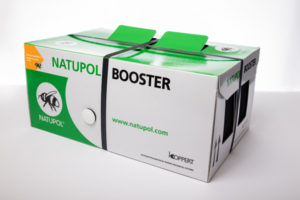
NATUPOL BOOSTER – open-field vegetables, planting strawberries, raspberries, blueberries, and seed sunflower and alfalfa. One hive covers 5,000 to 10,000 m2 and contains at least 300 active laborers, a nut, as well as a fully formed company with eggs, larvae and puppies. Especially recommended for fruit pollination because the hive is made of waterproof material with large ventilation openings.
Also, in the polyation of different seed crops, use the type of Lucilia (= Musca) sericata when we have very limited areas, or very difficult conditions for fertilization.
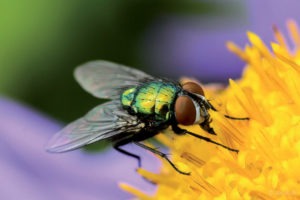 – NATUFLY
– NATUFLY
In porous paper bags of 2 l, there are about 33,000 larvae of this fly, which is applied once a week in the following quantities:
– Seed crops of cabbage (cabbage carfiol, oilseed rape) 15 – 20 ml / m2
– Seedlings of salads and endives of 10-15 ml / m2
– Seed carrots 15-20 ml / m2
– Seeds of cloves and leaves 15 -20 ml / m2
